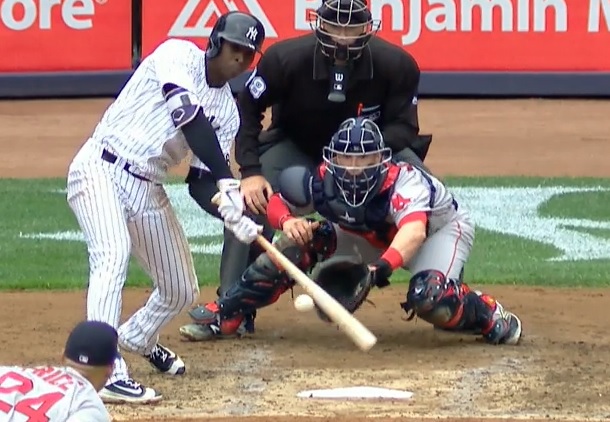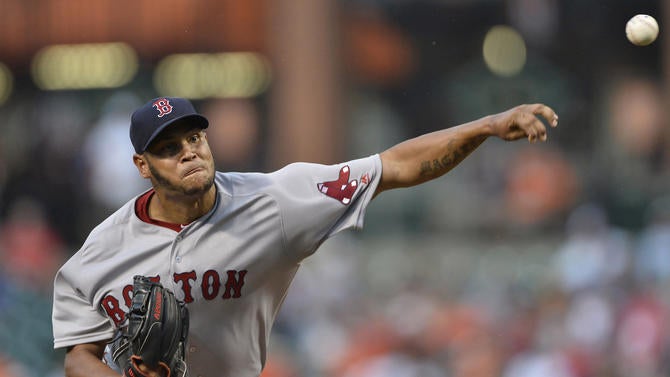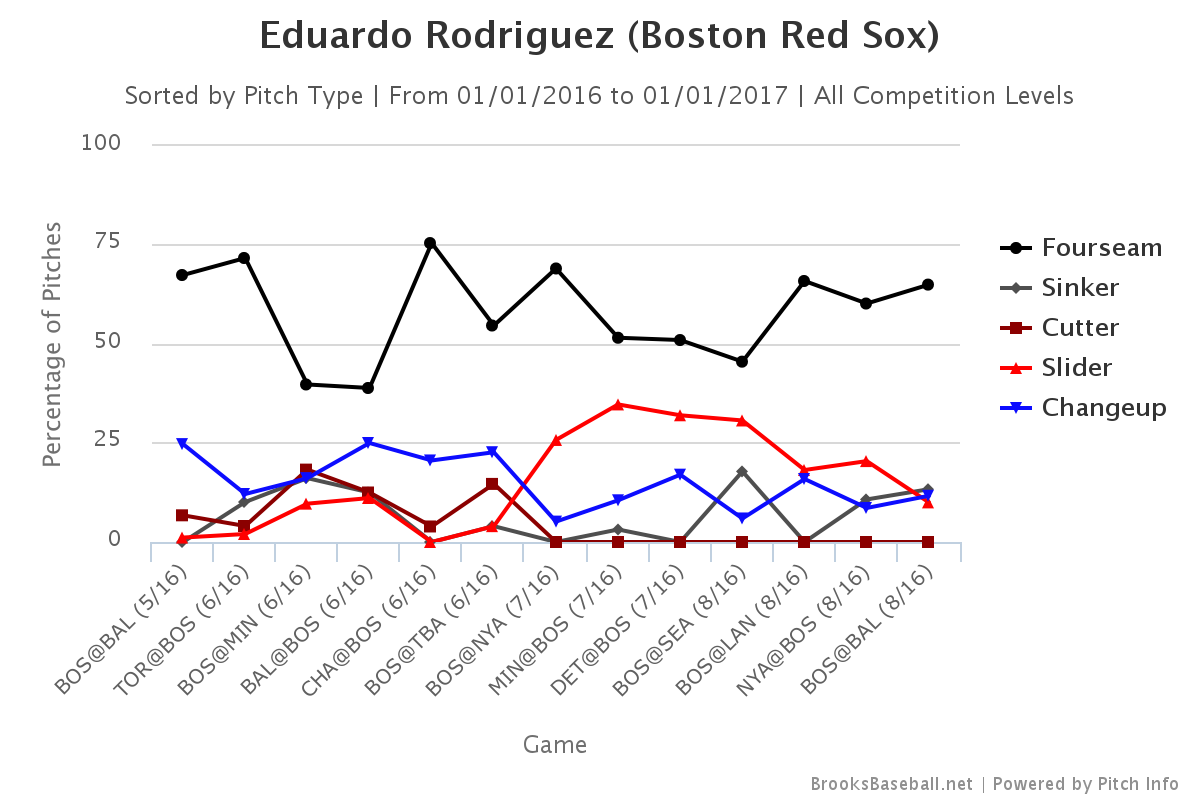The last few seasons have been a mixed bag for the Red Sox. They won the World Series in 2013, but they also suffered that embarrassing collapse in September 2011, and finished in last place in 2012, 2014, and 2015. That's one really high peak and four very deep valleys.
This season the Red Sox are living up to expectations and are firmly in the postseason hunt. They come into Sunday with a 72-57 record and the AL's best run differential at +121. Boston is one game back of the AL East leading Blue Jays, and they have a two-game lead over the Orioles for the top wild-card spot. They're three games up on a postseason spot in general.
The BoSox are where they are thanks largely to their offense. They lead all of baseball in runs (700), batting average (.284), on-base percentage (.350), and slugging percentage (.466). It's felt like they've started each game with a three-run head start for most of the season. Building a dominant offense is a great recipe for success.
And yet, the Red Sox were unable to separate themselves from the pack in the first half because their pitching staff was really shaky. Their starters in particular. Boston's rotation posted a 4.72 ERA in the first half, which ranked 19th among the 30 clubs. That happened even though knuckleballer Steven Wright went into the All-Star break with an AL leading 2.68 ERA.
The second half has gone much better for the Red Sox rotation. Check out the performance of their starters in the 42 games since the All-Star break:
| Win% | ERA | WHIP | FIP | K/9 | BB/9 | HR/9 | WAR | |
| First Half | .597 | 4.72 | 1.36 | 4.51 | 7.9 | 3.1 | 1.3 | 5.0 |
| Second Half | .630 | 3.46 | 1.17 | 3.70 | 7.8 | 2.4 | 1.0 | 5.3 |
That is substantial improvement from the first half to the second half. Boston's rotation has shaved more than a full run off their ERA, mostly by reducing the number of walks and homers. That'll do it. The Red Sox play in a hitter friendly ballpark and in a division with three other hitter friendly ballparks. Cutting down on free passes goes a long way.
Several things have to happen for a rotation to improve that much within the season. That much improvement is not a function of changing fifth starters or something small like that. Here are three reasons the Red Sox rotation has been so much better since the All-Star break.
1. Price started stranding runners

Even though the rotation has turned things around, there's no doubt David Price's first season with the Red Sox has been a disappointment. He leads the AL with 183 2/3 innings, so he has been a workhorse, but he also has a 3.97 ERA (115 ERA+). That's good, but not nearly as good as 2.90 ERA (133 ERA+) he posted from 2012-15.
Price's underlying stats in the first half were very strong. He struck out a ton of batters and didn't walk any, and that usually leads to good things. That didn't seem to be the case for Price though. It seemed like every time he put runners on base, they found a way to score. He's been able to do a better job stranding those runners in the second half.
| IP | ERA | Opp. AVG/OBP/SLG | K/9 | BB/9 | HR/9 | Strand Rate | |
| First Half | 124.1 | 4.34 | .251/.303/.415 | 10.1 | 2.0 | 1.2 | 70.9% |
| Second Half | 59.1 | 3.19 | .269/.310/.414 | 7.0 | 2.1 | 0.9 | 77.3% |
The MLB average strand rate is 72.9 percent this year, though over the last few years Price hovered closer to 78 percent. Great pitchers are better at stranding runners. There is also some element of luck involved here too. It's baseball. There's always going to be luck involved.
I remember back in May, during a game against the Yankees, Didi Gregorius cleared the bases against Price with a double into the right field corner. Here's the video. What stood out was the pitch. Price dropped a two-strike changeup down in the zone and Gregorius still managed to golf it into the corner. Look:

Price executed his pitch and most times a changeup in that spot results in a swing and a miss or a soft ground ball. Instead, it went into the corner and scored three runs even though Gregorius didn't fully square it up.
There was a lot of that happening in the first half. Price would execute his pitch and still get burned. It happens to every pitcher throughout the season, that's baseball, but for Price it seemed like an every start occurrence. That is no longer the case in the second half. He's been rewarded when he makes his pitch more often than not.
2. Pomeranz stopped the fifth starter revolving door

The Red Sox acquired All-Star Drew Pomeranz from the Padres prior to the trade deadline, after he threw 102 innings with a 2.47 ERA (163 ERA+) for San Diego. Unsurprisingly, Pomeranz hasn't been quite that good with the BoSox, pitching to a 4.06 ERA (113 ERA+) in 44 1/3 innings. Moving into a hitter friendly home ballpark in the DH league was inevitably going to hurt his numbers.
Pomeranz has made eight starts with Boston and the last five have been fantastic: 2.40 ERA with a 1.20 WHIP in 30 innings. More importantly, he put an end to the revolving door the Red Sox had been using for their fifth starter. Here is the collection of fifth starters the BoSox used prior to the All-Star break:
- Joe Kelly: 8.46 ERA in 22 1/3 innings (six starts)
- Sean O'Sullivan: 6.64 ERA in 20 1/3 innings (four starts)
- Henry Owens: 5.11 ERA in 12 1/3 innings (three starts)
- Roenis Elias: 15.75 ERA in 4 innings (one start)
That's 59 innings and 14 starts of 7.63 ERA ball. Awful. Thanks to Pomeranz, those four pitchers have combined to make only one start in the second half: Owens made a spot start in place of the injured Eduardo Rodriguez last week.
Pomeranz has not been quite as dominant as the Red Sox hoped since the trade, though compared to the guys he's replacing in the rotation, he's been an enormous upgrade.
3. Rodriguez brought his slider back

A knee injury suffered during a spring training drill delayed the start of Eduardo Rodriguez's season by several weeks. He didn't make his season debut with the Red Sox until May 31, and for his first few starts back, he was pretty terrible. Terrible enough that the team sent him down to Triple-A for more work.
After two Triple-A starts and some mechanical tweaks, Rodriguez returned to Boston and has been excellent in the second half. He had an 8.59 ERA and a 1.74 WHIP in the first half (29.1 innings), and now has a 2.52 ERA and a 1.14 WHIP in the second half (39 1/3 innings). Some improvement was inevitable -- Rodriguez is not a true talent 8.59 ERA pitcher -- but this is staggering.
What changed? Rodriguez's pitch selection. When he came back up from Triple-A, he brought his slider with him, and he's used it heavily in the second half. From the invaluable Brooks Baseball:

Rodriguez is primarily a fastball-changeup pitcher. That's his bread and butter. The slider is his third pitch, but for a while he didn't use it much. He didn't abandon it entirely, he just used it sparingly. Hitters could take that pitch out of their mind and sit fastball or changeup. Now Rodriguez is using the slider a little more often and giving hitters something else to think about. That third pitch -- and the willingness to use it -- makes a huge difference.
So now comes the million dollar question: are the Red Sox the favorites in the AL East now that their rotation is improved? SportsLine gives Boston a better chance to win the division (51.4 percent) than the Blue Jays (38.2 percent), though FanGraphs thinks the race is much closer. Their projection system has the Jays at 48.6 percent and the BoSox at 45.3 percent.
At the moment I still believe the Blue Jays are the more complete team -- the Red Sox still have some bullpen issues to deal with -- especially now that Jose Bautista is healthy and back in the lineup. Boston's offense is far better at this point, but Toronto can score runs too, and they've out-pitched and out-defended the Red Sox all season. I still lean towards the Blue Jays at the moment.
That said, we're nitpicking here, and these two teams are separated by one game in the standings. They also have six head-to-head games remaining this year, including the final three games of the regular season at Fenway Park. That series could be huge. For now, the Red Sox have improved their rotation in the second half, and that makes them more dangerous than they have been all season.


















